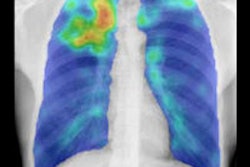The annual incidence of tuberculosis (TB) has leveled off in the U.S., arresting years of decline and signifying that the country's progress against the disease has stalled, according to a new report issued by the U.S. Centers for Disease Control and Prevention (CDC).
Preliminary data on the incidence of tuberculosis in 2015 indicate an incidence of 3.0 cases per 100,000 individuals, about the same as in 2014 and 2013. That counteracts the trend of the last two decades, in which incidence fell at a rate of about 0.2 fewer cases per 100,000 individuals each year.
The CDC report also noted that the incidence rate among foreign-born individuals of 15.1 cases per 100,000 is 13 times higher than the rate of U.S.-born people, which is 1.2 cases per 100,000. California, Florida, Texas, and New York are the four states with more than 500 cases of TB reported in 2015, these states also accounted for almost half of all TB cases in the U.S. Alaska was the state with the highest TB rate, of 9.1 cases per 100,000 individuals, and the lowest was in West Virginia, with only 0.5 cases per 100,000.
The report authors recommend that resuming progress in the fight against TB will require new initiatives to detect and treat latent TB infection and also improved systems to interrupt TB transmission in the U.S. and globally, especially in countries that are the origin for TB in the U.S.



















